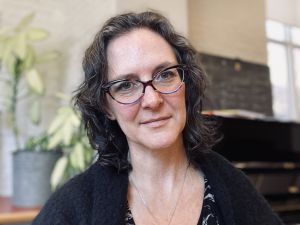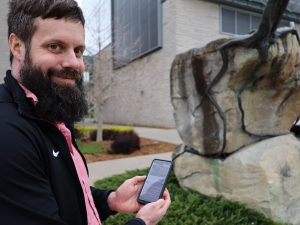 Brock University Health Sciences students played a role in developing a new system designed to save the lives of children.
Brock University Health Sciences students played a role in developing a new system designed to save the lives of children.Brock University Health Sciences students played an important role in creating a new technology-based system that allows doctors at different hospital sites to work together to save lives.
The tele-resuscitation system now being used by Niagara Health — the first of its kind in Ontario — uses high-definition cameras set up in the resuscitation room at each hospital site. When requested, doctors from Hamilton Health Sciences’ McMaster Children’s Hospital (MCH) are able to log into the system and get a bird’s-eye view of the patient and room. The MCH team can control the view, as well as speak and listen to the team at Niagara Health. This allows the MCH team to remotely coach the Niagara Health team through advanced techniques to stabilize patients as quickly as possible.
As the system was being developed, Brock students Rachelle Roy and Lidia Mateus conducted research, identified best practices for the use of the technology in clinical settings and helped to create the process map by which physicians are contacted when patient cases arise. They are also helping to evaluate the system to identify areas of improvement.
Roy and Mateus are part of the Interprofessional Education for Quality Improvement Program (I-EQUIP), which functions as an extension of the classroom, providing an opportunity for students from Brock University, as well as leaders and front-line staff from Niagara Health to work together on a variety of quality patient-care initiatives.
“The work that the Brock students are doing on this is behind the scenes,” said Brock Health Sciences Associate Professor Madelyn Law. “Although we are not the ones providing the care and saving the life, just being part of this project is truly one of my career highlights.”
The case of the first life saved through the tele-resuscitation system happened earlier this year.
When three-year-old Lucas Waring woke up feeling sick, his mom Nikki thought it was the flu. However, it quickly progressed to a swollen stomach and erratic breathing. Nikki knew something was very wrong and took him to the closest hospital, Niagara Health’s Welland Site.
His X-rays showed that his abdomen was filling with air and pressing on other organs. It was getting bigger by the second and his health was rapidly deteriorating. Soon, the pressure would cut off his blood supply and stop his heart.
The Niagara Health emergency team knew he would need to be transferred to MCH to determine the cause of air build up, but first they had to save his life. They connected to MCH’s pediatric emergency team using tele-resuscitation to get immediate help.
“We’re focused on reaching beyond our walls to provide the best care possible to our most critically ill patients. This includes drownings, car accidents, poisonings, and acute asthma attacks,” said Dr. Chris Sulowski, Deputy Chief of Pediatric Emergency Medicine at MCH and tele-resuscitation lead. “With this system, we can give advice as if we’re standing there ourselves.”
Unbeknownst to Nikki, Lucas was the first live case using the tele-resuscitation system.
“Everything was happening so quickly,” she said. “I didn’t think anything of it when I saw the doctors were talking to a different set of doctors on a TV screen. Everyone was calm and knew what to do so I didn’t even realize how life-threatening his condition was.”
Once the system was up and running, the MCH team instructed the Niagara Health team to stick a needle in Lucas’ abdomen to let the air out. They saw an instant improvement in Lucas as air gushed out the needle and the pressure in his belly decreased. Colour came back to his skin. They began to prep him for transport.
“It’s rare for an emergency doctor at a non-children’s hospital to see a child in Lucas’ condition,” said Dr. Madan Roy, Deputy Chief of Pediatrics at MCH and Chief of Pediatrics at Niagara Health. “The ability for the Niagara Health and MCH teams to work together as if they were in the same room saved his life.”
At smaller community hospitals, complex children’s emergency cases are far less common, but the closest emergency department is the best place to go for immediate medical attention.
“The physical distance between McMaster Children’s Hospital and our hospitals can be a challenge in life-threating situations,” says Dr. Rafi Setrak, Chief of Emergency Medicine at Niagara Health. “The tele-resuscitation system eliminates that challenge. It allows our teams to work collaboratively and more efficiently when time is of the essence.”
Since these situations are not overly common, the teams anticipate using it once or twice a month at most. But it has already proven its value.
When Lucas arrived at MCH, the team knew his situation well and he was in surgery within the hour. The scare hasn’t left the child with any long-term consequences.
The team behind the tele-resuscitation project at MCH is looking to extend the system’s reach to other community hospitals within the region it serves so even more children can benefit from this technology, and the specialized expertise of its pediatric emergency team.
“The fact that one child had a life-saving treatment because of this project is really what fuels my drive to engage in quality of care research and experiential education,” Law said. “It is important for our students to engage with and see how the physicians and other health professionals in our community are providing innovative and high quality care.”









